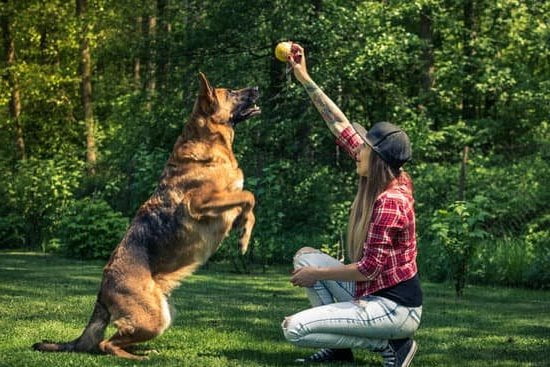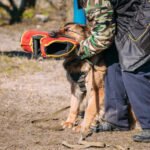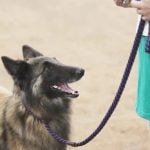Are you wondering how to train your dog to free feed? Free feeding is a method of providing food to your dog where they have constant access to it throughout the day. In this article, we will discuss the ins and outs of free feeding, including its benefits, potential drawbacks, and ways to effectively train your dog for this feeding method.
Free feeding can have significant implications for your dog’s eating habits and overall health. Understanding what free feeding means for your dog is crucial in ensuring that they maintain a balanced diet and healthy lifestyle. By incorporating free feeding into your dog’s routine, you can provide them with the flexibility to eat at their own pace and according to their natural instincts.
In this section of the article, we will delve into the concept of free feeding and its impact on your dog’s eating behavior. We will explore the advantages and disadvantages of this feeding method, as well as how to create an environment conducive to free feeding.
Additionally, we will outline strategies for choosing the right food options for free feeding and address techniques for training your dog to eat responsibly while avoiding overeating. So if you’re considering implementing free feeding for your furry friend, read on to learn more about what it entails and how it can benefit your dog.
Pros and Cons of Free Feeding
Free feeding, the practice of leaving food out for your dog to eat as they please, comes with both advantages and disadvantages. One of the main benefits of free feeding is that it allows your dog to have constant access to food, which can be especially helpful for dogs with medical conditions that require frequent eating. It also eliminates the need for strict mealtime schedules, giving your dog a sense of autonomy and control over their own diet.
However, free feeding also has its drawbacks. One potential downside is that it can lead to overeating and obesity if not managed properly. Some dogs may struggle with self-control and end up consuming more food than they actually need, leading to weight gain and related health issues. Free feeding can also make it difficult to monitor your dog’s food intake, making it challenging to detect any changes in appetite or dietary preferences.
Before deciding whether free feeding is the right choice for your dog, consider your pet’s individual needs and behaviors. If you have a puppy or a dog who tends to overeat, free feeding may not be the best option.
On the other hand, if your dog has specific dietary requirements that necessitate frequent snacking throughout the day, free feeding could be a suitable choice. Ultimately, it’s essential to assess the pros and cons carefully and consult with a veterinarian before implementing a free feeding regimen for your dog.
When considering how to train your dog to free feed, it’s important to weigh these various factors and determine if this method aligns with your pet’s specific needs and lifestyle.
Getting Started
Once you have decided to transition your dog to free feeding, it’s important to set up the right environment to ensure that they can eat responsibly and maintain a healthy weight. Here are some steps to get started:
- Designate a specific feeding area: Choose a quiet and low-traffic area in your home where your dog can eat undisturbed. This will help create a positive association with mealtime and reduce the likelihood of distractions or resource guarding.
- Invest in the right food storage containers: To prevent overeating and spoilage, it’s essential to store your dog’s food properly. Invest in airtight containers that will keep the food fresh and easily accessible for your pet.
- Establish a routine: While free feeding allows your dog to eat at their own pace, it’s still important to establish a feeding schedule. This will help regulate their eating habits and make it easier for you to monitor their food intake.
- Provide access to clean water: In addition to food, make sure that your dog has constant access to fresh water. Proper hydration is essential for their overall health and well-being.
By creating an organized and conducive environment for free feeding, you can give your dog the opportunity to develop healthy eating habits while minimizing the risk of overeating or behavioral issues around mealtime. With patience and consistency, you can effectively train your dog to free feed in a way that benefits their overall health and happiness.
Choosing the Right Food
Free feeding your dog means providing them with access to food at all times, allowing them to eat whenever they feel hungry. When choosing the right food for free feeding, it is essential to prioritize their health and nutritional needs.
It’s important to select high-quality, balanced dog food that provides the necessary nutrients for your dog’s overall well-being. Look for options that contain real meat as the first ingredient, as well as whole grains, fruits, and vegetables.
When selecting the best free feeding options for your dog’s health, it’s crucial to consider their age, size, breed, and activity level. Puppies have different nutritional requirements than adult dogs, and small breeds may need smaller kibble sizes to prevent choking. Additionally, active dogs may require food formulated for energy and muscle maintenance.
It is also advisable to consult with a veterinarian or a pet nutritionist to get recommendations on specific brands or types of dog food that are suitable for free feeding. They can provide guidance on appropriate portion sizes and help you understand your dog’s unique dietary needs.
| Nutritional Needs | Considerations |
|---|---|
| Real Meat First Ingredient | Important for protein intake |
| Age-specific Formulas | Puppies have different nutritional needs than adult dogs |
| Consultation with Vet | Seek professional advice on appropriate portion sizes and dietary needs |
Training Techniques
Training your dog to free feed requires a different set of techniques compared to traditional feeding methods. This section will provide guidance on how to train your dog to eat responsibly and avoid overeating when given the freedom to access food at any time.
Establishing Meal Times
One effective training technique for free feeding is to establish specific meal times, even though the food is available all day. By setting regular meal times, you can control when your dog eats while still allowing them the freedom to graze throughout the day. This helps create a routine for your dog and prevents overeating.
Portion Control
Another important aspect of training your dog to free feed is portion control. Instead of leaving an endless amount of food out for your dog, measure their daily portion and divide it into separate servings throughout the day. This ensures that your dog doesn’t consume too much food at once and helps regulate their eating habits.
Positive Reinforcement
Using positive reinforcement can also be an effective training technique for free feeding. When your dog displays responsible eating behavior, such as not scarfing down their entire meal in one sitting, be sure to praise and reward them. This encourages them to continue exhibiting good eating habits and reinforces the training process.
By implementing these training techniques, you can successfully teach your dog to eat responsibly and avoid overeating while free feeding. It’s important to be patient and consistent with the training process in order to achieve the desired results.
Addressing Behavior Issues
When it comes to free feeding, some dogs may exhibit behaviors such as resource guarding and food aggression. Resource guarding occurs when a dog becomes possessive over their food, while food aggression can manifest as growling, snapping, or even biting when approached while eating. It’s important to address these issues early on to ensure a safe and stress-free free feeding environment for your dog.
One effective way to prevent resource guarding and food aggression is through positive reinforcement training. This involves rewarding your dog for good behavior around food, such as allowing others to approach their bowl without any signs of aggression. By using treats, praise, and consistent training, you can help your dog associate positive experiences with mealtimes and eliminate any negative behaviors.
Additionally, creating a calm and peaceful environment during mealtimes can also help reduce the likelihood of resource guarding and food aggression. Avoid any sudden movements or loud noises around your dog’s feeding area, and make sure that everyone in the household respects your dog’s space during mealtime. This will help your dog feel more relaxed and less inclined to exhibit aggressive behaviors when eating.
It’s important to approach these behavior issues with patience and understanding. Training your dog to free feed without exhibiting resource guarding or food aggression may take time, so consistency is key. By using positive reinforcement techniques and creating a peaceful mealtime environment, you can effectively address these behavior issues and create a harmonious free feeding experience for your dog.
| Behavior Issue | Dealing Technique |
|---|---|
| Resource Guarding | Positive reinforcement training |
| Food Aggression | Create a calm mealtime environment |
Monitoring and Adjusting
Once you have established a free feeding routine for your dog, it is crucial to monitor their food intake and make any necessary adjustments. Here are some tips on how to effectively track your dog’s eating habits and make changes as needed:
- Keep a food journal: It can be helpful to keep a log of the amount of food you put out for your dog each day and how much is left over. This will give you a clear picture of their daily intake and whether any adjustments need to be made.
- Observe your dog’s weight: Regularly weigh your dog to ensure that they are maintaining a healthy weight. If you notice that they are gaining or losing weight, it may be necessary to adjust the amount of food available for free feeding.
- Consult with your veterinarian: Your vet can provide valuable insight into your dog’s dietary needs and offer guidance on how to adjust their feeding routine if necessary. They can also help determine if any health issues are affecting your dog’s appetite.
It is important to remember that free feeding does not mean unlimited feeding. You still need to be mindful of how much your dog is eating and make any necessary changes to ensure they are receiving the right amount of nutrition.
In addition, be aware that some dogs may take advantage of free feeding by overeating. If you notice that your dog is consistently finishing all the food in their bowl quickly, it may be necessary to implement portion control or other training techniques to encourage more responsible eating habits.
Ultimately, monitoring and adjusting your dog’s free feeding routine requires attentiveness and dedication, but it can lead to a harmonious and stress-free mealtime for both you and your pet.
Common Mistakes to Avoid
When training your dog to free feed, it’s important to be mindful of common mistakes that can hinder the process. Avoiding these pitfalls will ensure a smooth transition to this feeding method and prevent any negative impacts on your dog’s behavior and health.
Overfeeding
One of the most common mistakes when free feeding your dog is overfeeding. It can be easy to lose track of how much your dog has eaten, especially if multiple family members are involved in the feeding process. Without portion control, some dogs may overeat, leading to obesity and other health issues. To prevent overfeeding, it’s important to establish clear guidelines for how much food should be available at any given time.
Using Low-Quality Food
Another mistake to avoid is choosing low-quality food for free feeding. While it may seem convenient to leave a bowl of kibble out for your dog to graze on throughout the day, it’s essential to prioritize their nutrition. Opt for high-quality, balanced diets that meet your dog’s specific dietary needs. This will ensure that they receive the necessary nutrients without overeating or resorting to scavenging for additional food.
Failure to Monitor Intake
Finally, a common mistake in free feeding is failing to monitor your dog’s food intake. Even though you’re allowing your dog access to food throughout the day, it’s crucial to keep track of how much they are consuming. This will help you identify any changes in appetite or potential health issues early on. Additionally, monitoring intake allows you to make adjustments as needed and prevent weight-related problems.
By avoiding these common mistakes when training your dog to free feed, you can create a healthy and sustainable eating routine for your furry friend while promoting responsible eating habits and overall well-being.
Conclusion
In conclusion, free feeding can be a convenient and stress-free option for both you and your dog. It allows your pet to have access to food whenever they are hungry, which can be especially beneficial for dogs with medical conditions or those who graze throughout the day. However, it’s important to weigh the benefits against the potential drawbacks. Free feeding may not be suitable for all dogs, particularly those who struggle with overeating or obesity.
When considering whether to train your dog to free feed, it’s crucial to take into account their individual needs and behavior patterns. Some dogs may thrive with this feeding method, while others may struggle and develop behavioral issues such as resource guarding or food aggression. It’s essential to monitor your dog closely during the training process and make adjustments as needed to ensure they maintain a healthy weight and relationship with food.
Overall, patience is key when training your dog to free feed. It takes time and consistency to teach your pet responsible eating habits and avoid overeating.
By following the proper techniques and being mindful of potential behavior issues, you can successfully implement free feeding in a way that benefits both you and your canine companion. Remember that every dog is unique, so be prepared to make adjustments along the way as you work towards finding the best feeding method for your furry friend.
Frequently Asked Questions
Is It OK to Free Feed Your Dog?
Free feeding your dog is not always recommended as it can lead to overeating and obesity. It’s better to establish a feeding schedule to control portion sizes and monitor their food intake.
Do Dogs Stop Eating When They Are Full?
Dogs may not always stop eating when they are full, especially if food is readily available. They may continue to eat out of boredom or simply because it’s there. Monitoring portion sizes and meal times is important for managing their diet.
How Do I Train My Dog to Eat When Hungry?
To train your dog to eat when hungry, establishing a consistent feeding schedule is key. Offer their food at the same times each day and remove any uneaten food after 20-30 minutes. This helps them learn to eat when the food is provided and avoid picky eating habits.

Welcome to the blog! I am a professional dog trainer and have been working with dogs for many years. In this blog, I will be discussing various topics related to dog training, including tips, tricks, and advice. I hope you find this information helpful and informative. Thanks for reading!





